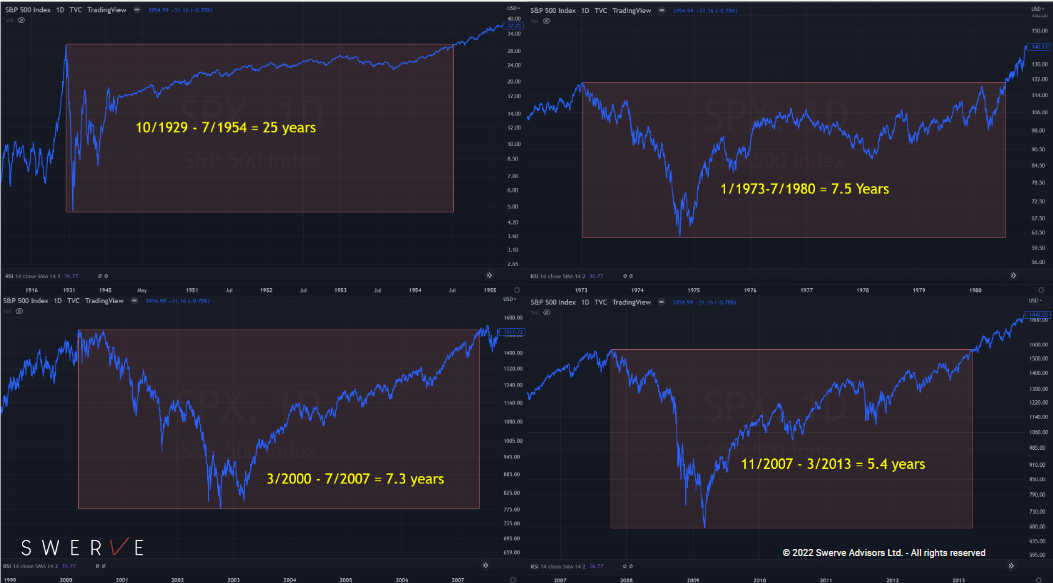Megabears
If ever there was a dogma in equity investing , it has to be "buy and hold ". The idea that investors should not worry with short-term price movements and technical indicators as, over the long term, returns will take care of themselves. While the principle typically holds, history shows that the dogma may prove devastating as too much of a "long-term" may not be an option for some.

If ever there was a dogma in #equityinvesting , it has to be “#buyandhold “. The idea that investors should not worry with short-term price movements and technical indicators as, over the long term, returns will take care of themselves. While the principle typically holds, history shows that the dogma may prove devastating as too much of a “long-term” may not be an option for some.
Most of the 26 #bearmarket in history have been reasonably benign. Looking at the nominal “break-even”, the amount of time it took for the market to reach its pre-bear level, it takes typically 2-3 years before investors can see the S&P 500 reach the previous ATH. There are however some notable exceptions, “megabears” when it took several years for the index to reach the previous peak price. Those instances were 1929-1954 (25 yrs), 1973-1980 (7.5 yrs), 2000-2007 (7.3 yrs) and 2007-2013 (5.4 yrs) (see chart). The last two events can be arguably considered one 12.7 years long megabear as the 2000 peak price was only reached again in July 2007 and, by Oct 2007, the market started to slide again and entered a new multi-year bear.
Do note that those S&P price levels are nominal and do not factor #inflation . If the latter is included, the time for investors to “break-even” in real terms would be far longer. In the case of 1929-1954 for example, the USD lost 85% of its value and, therefore, a 1929 investor would have had to wait three decades or until 1959 to see its investment recover its original real-term value. It is also interesting to observe that at least two of the megabears, 1940s & 1970s, were periods of high inflation. The 1940s were also characterized by exceptional debt levels, while the 1970s experienced stagnating economic growth.
An investor’s ability to wait the best part of a decade or two to break-even on their equity portfolio is not a given. It is rather the function of their age, overall asset allocation and wealth. “Buy and Hold” in certain cases could prove catastrophic for older and/or not properly diversified investors. Ominously enough, the current bear market is playing out at a time of both higher inflation and exceptionally high level of debt, and reminiscent of two of the most lethal bears ever. Let’s just hope it will not turn out to be a megabear. Disclosure: Hold all assets mentioned. Not investment advice. Do your own research.